Fibroids can produce mild or no symptoms at all. For others, symptoms of uterine fibroids include considerable pain and heavy bleeding. Because of acute pain and heavy bleeding, it is difficult for women to carry on their daily routine office or even house hold work. For these reasons alone, treating uterine fibroids is the priority for most woman seeking symptomatic relief. Uterine fibroid embolization (UFE) is a minimally invasive procedure that safely and effectively shrinks uterine fibroids and RELIEF from the unpleasant symptoms.
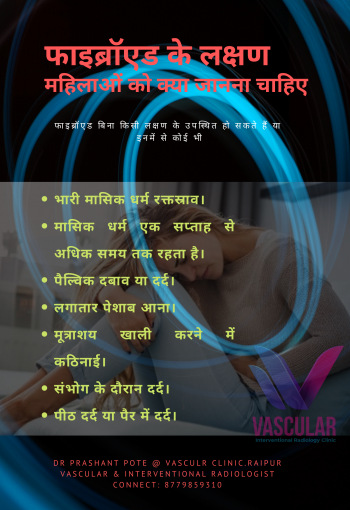


What Are the Possible Problems Caused by Uterine Fibroids?
-
Abnormal menstrual cycle (heavy or frequently occurring)
-
Painful menstrual periods
-
Pain during or after sexual intercourse
-
Pressure on the bladder causing frequent urination
-
Acute or severe pelvic pain
-
Feeling of heaviness in lower abdomen
Your doctor just told you to have a Hysterectomy for your Fibroids. Before you do anything, make sure you look into the Non-Surgical alternative (UFE)
How does the Procedure work?
The procedure is typically performed in DSA Cath lab by an Interventional radiologist. The procedure involves inserting a catheter through the groin, manoeuvring it through the uterine artery, and injecting the embolic agent into the arteries that supply blood to the uterus and fibroids. As the fibroids die and begin to shrink, the uterus fully recovers.
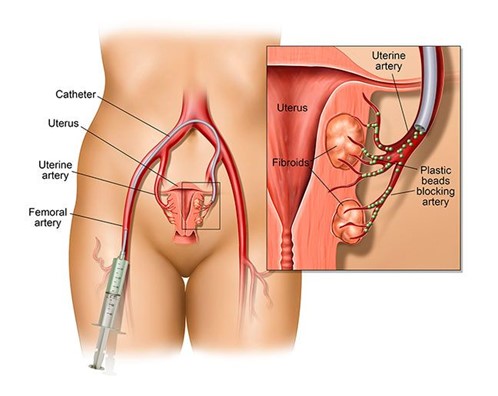
Follow-up studies have shown that nearly 90 percent of women who have their fibroids treated by uterine fibroid embolization experience either significant or complete resolution of their fibroid-related symptoms. This is true both for women who have heavy bleeding as well as those who have bulk-related symptoms including urinary frequency, pelvic pain or pressure. More importantly, they soften after embolization and no longer exert pressure on the adjacent pelvic organs.
Benefits to uterine fibroid embolization (UFE)
-
Uterine fibroid embolization is a minimally invasive outpatient procedure with no incision needed
-
Requires only local (rather than general) anesthesia
-
Does not cause scarring like surgical techniques do
-
One or multiple fibroids; all gets treatment in same setting. Multiple fibroids don’t add to cost of procedure.
-
A good option if you would like to preserve your uterus vs. a hysterectomy
-
While there will be some moderate pain after a UFE procedure, it is typically less intensive than post-surgical pain
-
85-90% of women experience significant relief of their symptoms
-
Faster recovery time compared to surgery
-
Same day procedure, typically no overnight stay needed or just 1 day stay is enough.
-
Reduced risk of infection as compared to surgery.
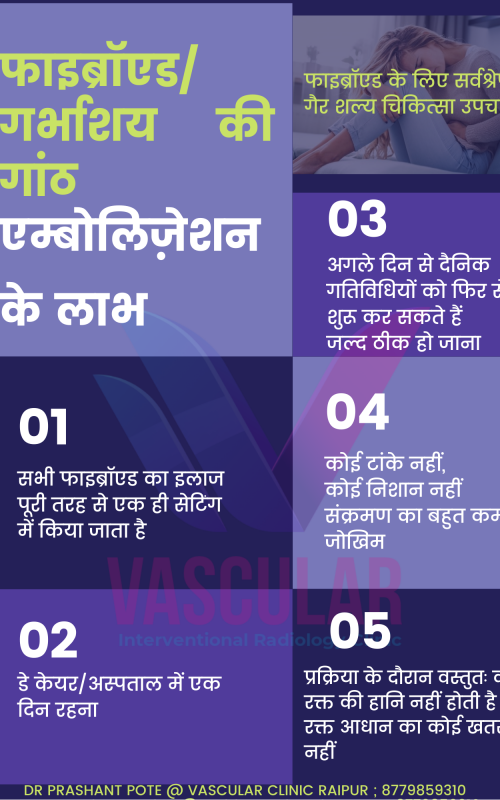
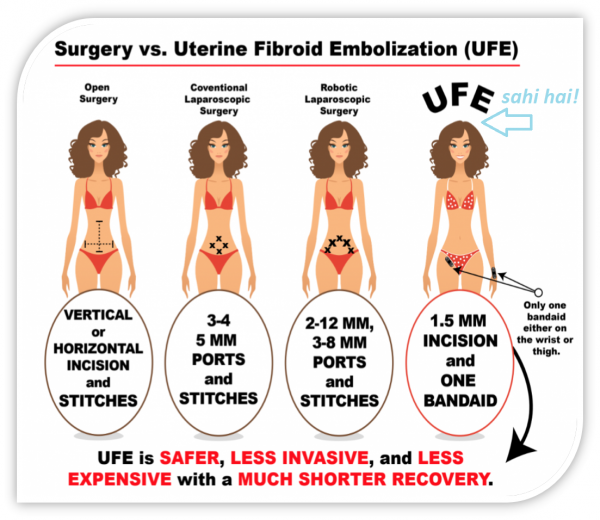
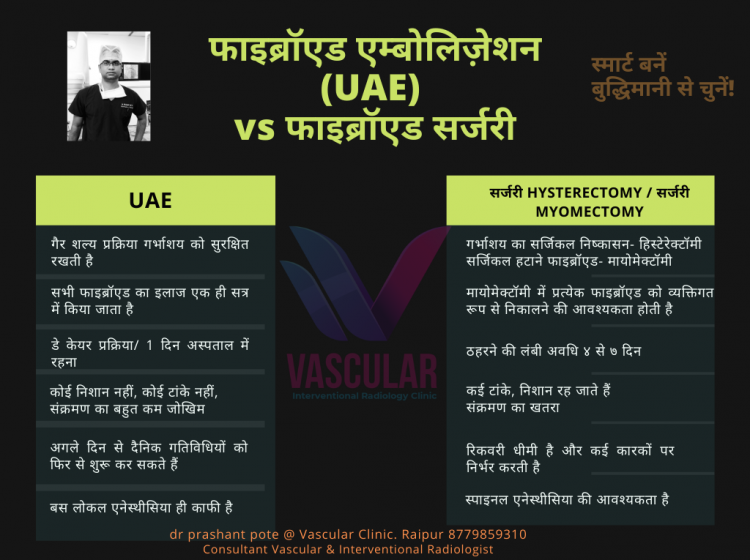
Case 1: A 32 years female was appearing to heavy menstrual bleeding and severe abdominal pain during menses. She was diagnosed to have uterine fibroids on ultrasound abdomen and MRI pelvis. Patient opted for nonsurgical treatment (UFE) and was able to resume her office for with one-day rest.
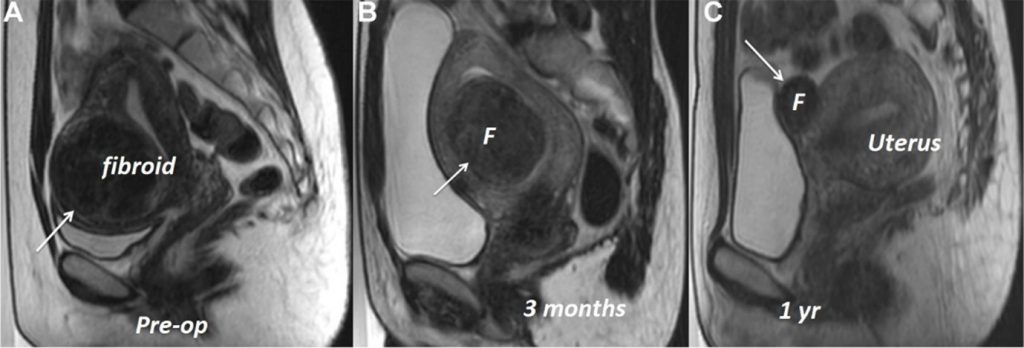
Actual DSA images:
Dr Prashant Pote, specialist in Fibroid embolization and his clinical staff at our vascular center combine medical expertise and compassion to guide you through your uterine fibroid treatment journey every step of the way, providing symptomatic relief and getting you back to your daily routine quickly.
